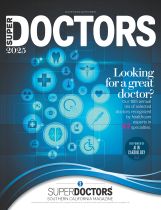The National Institutes of Health
Research Matters (NIH)
March 14, 2013
An international group of researchers discovered 7 regions of the human genome associated with an increased risk of age-related macular degeneration (AMD), a leading cause of blindness. The group also confirmed 12 regions identified in previous studies. The findings may eventually lead to new treatment and prevention approaches to AMD.
AMD gradually destroys sharp, central vision as a person ages. The disease affects the macula, a region of the retina responsible for central vision. We rely on the macula for tasks that require sharp vision, such as reading, driving and recognizing faces. As AMD progresses, these tasks become more difficult. Some kinds of AMD are treatable if detected early, but no cure exists. An estimated 2 million Americans have AMD.
Scientists have found that age, diet and smoking influence the risk of developing AMD. Genetics also plays a strong role. AMD often runs in families and is more common among certain ethnicities, such as people of Asian or European descent. Genome-wide association studies (GWAS) have previously uncovered genetic factors linked to AMD risk. These studies involve scanning the entire human genome for genetic differences between people with AMD and matched controls. The larger the GWAS, the greater its ability to uncover relevant variations.
The new study was carried out by the AMD Gene Consortium, a network of international investigators supported by NIH's National Eye Institute (NEI). It represents the most comprehensive analysis of genetic variations associated with AMD to date. The researchers analyzed data from more than 17,100 people with the most advanced and severe forms of AMD, and more than 60,000 people without AMD. The study appeared online on March 3, 2013, in Nature Genetics.
The scientists identified 7 new genetic regions, or loci, associated with AMD. As with the 12 found in previous studies, these 7 are scattered throughout the genome on different chromosomes. The 19 loci together implicate a variety of biological functions, including regulation of the immune system, maintenance of cellular structure, the growth and permeability of blood vessels, lipid metabolism and atherosclerosis.
"A large number of samples was needed to detect additional genetic variants that have small but significant influences on a person's disease risk," says NEI's Dr. Hemin Chin, who assembled the consortium and helped coordinate the study. "By cataloging genetic variations associated with AMD, scientists are better equipped to target corresponding biological pathways and study how they might interact and change with age or other factors, such as smoking."
The 19 genomic regions identified by this work will help guide scientists searching for the underlying causes of AMD. Eventually, these discoveries may help inform the development of new diagnostic and treatment strategies.

